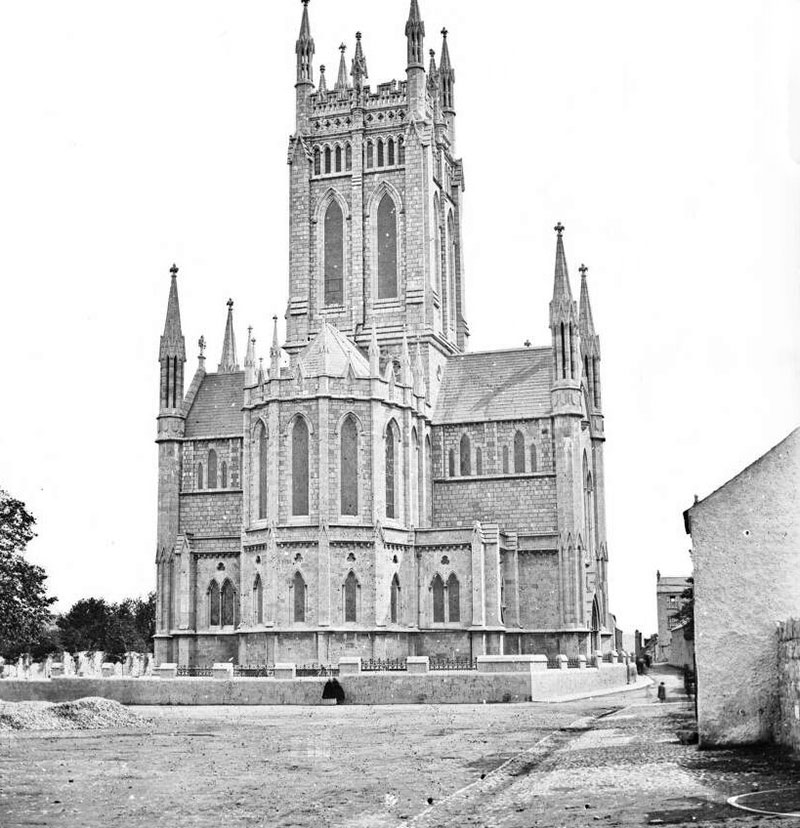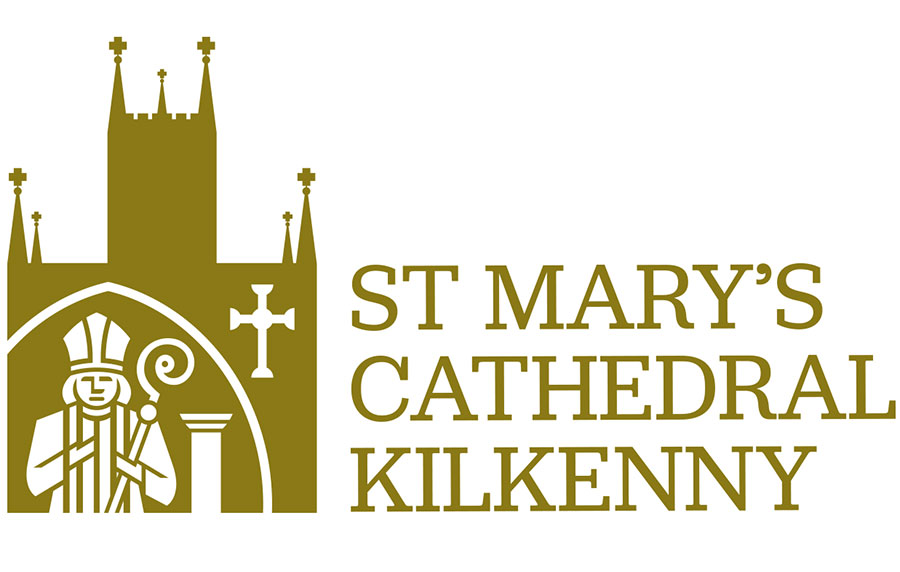Our Parish

History
It was William Kinsella, appointed bishop of Ossory at the age of thirty-three, who initiated the building of St Mary’s. A small chapel in St Mary’s Parish, St James’s Chapel, built in 1774 had served as a cathedral for the Catholic population until this time. During Bishop Kinsella’s years as bishop significant building took place in the diocese: 19 churches including those in Ballyragget, Castlecomer, Freshford, Inistioge, Durrow and Lisdowney, two wings of the present St. Kieran’s College completed, and a new cathedral began. William Deane Butler, the architect for St Kieran’s and Ballyragget, was chosen to be the architect of St Mary’s.
Kinsella announced his project for a new cathedral in February 1842 and the site chosen was that of Burrell’s Hall which had housed the first Catholic college founded in Ireland after the repeal of the law against Catholic schoolmasters in 1782. Work was begun in April 1843 and on 18 August the foundation stone was laid by Bishop Kinsella. When Kinsella died in December 1845 the walls were only seven feet high.
The new bishop, Edward Walsh, continued the project keeping it going right through the famine years providing much-needed work locally. The cost of the original building is estimated to have been £25,000.
For the grand opening admittance was by ticket only; prices were determined according to where one was seated. Bishop Walsh began the ceremony of consecration on Sunday morning, 4th October 1857, at 6.15 a.m. and concluded about 9.00 a.m. The usual ceremonies accompanied the consecration – the procession three times around the cathedral, with hymns and the sprinkling of holy water, the knocking on the main door twice and finally the entry into the cathedral, the consecration of the high altar and the altar of the Lady Chapel and the deposition of the saint’s relics in the altars. Twelve crosses that hung on each pillar along the nave were blessed and the bishop celebrated Mass in the Lady Chapel. The preacher for the occasion was the Bishop of Kerry, David Moriarty. Crowds flocked to the cathedral for the opening. The recently opened railway ran special trains and the C.Y.M.S did the stewarding. In the evening there were solemn pontifical vespers.
The cathedral was described as “of pure Gothic design, built entirely of chiseled limestone and cruciform in shape”. The tower which has become a landmark of the city was originally designed for St Kieran’s College and rises to a height of 186 feet. The high altar of Italian marble was purchased in Italy. The relics of SS Cosmos and Damian and St Clement were brought from Rome. The statue of Our Lady by Benzoni’s statue of Our Lady was in the Cathedral when it was opened in 1857. The relics of St Victoria came in 1867.
During Bishop Brownrigg’s time a new sacristy and chapter room were added (the old sacristy was beneath the high altar) and many other improvements were made. The centre porch and organ gallery were remodelled, heating was installed and new statues were purchased. James Pearse, the father of Patrick and Willie of the 1916 Rising, completed the marble altar rails and erected the altar to the Sacred Heart. At a cost of £8,000 the refurbished Cathedral was reopened on 9 April 1899 in the presence of Cardinal Logue of Armagh, Archbishop Walsh of Dublin, and many other dignitaries.
Less than thirty years later once more Bishop Collier found it necessary to carry out necessary work in St Mary’s both inside and outside. Turrets had to be repaired and a leaking roof overhauled. Mosaic work and painting were done on the sanctuary and side chapels, pitch pine seats were put in the aisles and transepts, an altar was erected to the Little Flower, the organ was remodeled at a cost of £2,500 and choir stalls were introduced. The cost came to £28,000 and was raised by collections throughout the diocese.
During Bishop Birch’s time, the cathedral was modernized to bring it into line with the requirements of Vatican II. Under the great tower was placed a new high altar of polished limestone surrounded by copper reliefs depicting biblical scenes. Many other changes were made including a new tabernacle to facilitate exposition of the Blessed Sacrament and what is practically a new organ constructed by a distinguished German organ builder.
St Mary’s Cathedral still dominates the landscape of Kilkenny, its great tower being visible from all approaches to the city. It stands as a reminder of the faith and growing confidence of a far-off generation – a reminder and much more than a reminder.
